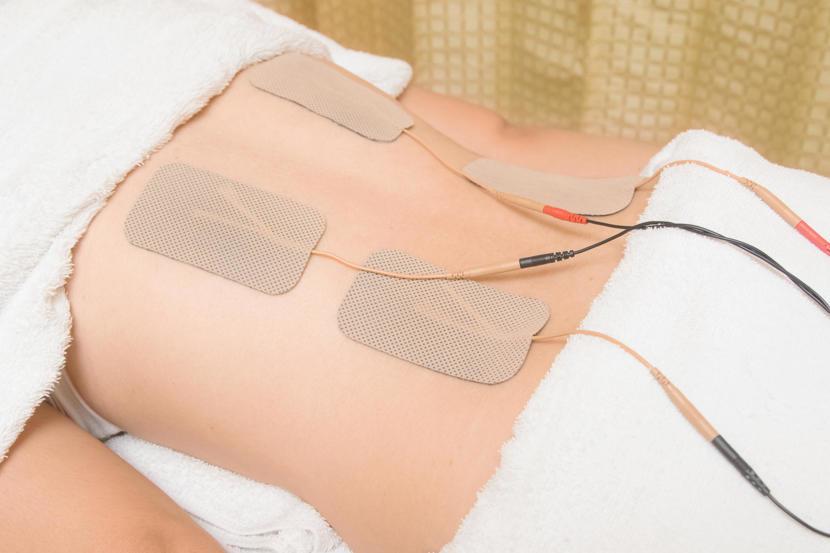Can a TENS Unit Ease Fibromyalgia Pain?
Some patients use a TENS unit to ease their chronic pain, but does it really help? Find out here.

Those with fibromyalgia live every day with chronic pain. Medications may work great, but they often have unacceptable side effects. If you don’t want to handle your pain with drugs, other alternatives might help, and one of these alternatives could be a TENS unit.
A TENS Unit
Transcutaneous electrical nerve stimulation or TENS is a machine that sends electrical currents through your skin to stimulate the body's nerves. A TENS unit is based on the premise that electricity travels through nerves and block out pain. TENS units are great to help treat minor pain.
TENS therapy for pain management works on the theory that electricity from the electrodes will stimulate nerves in the painful area and send signals to the brain that scramble pain perception.
TENS units are often used by those who suffer from arthritis, athletes and professional sports therapists to control the pain of injuries and strained muscles. Back pain patients use a TENS unit for their chronic back pain that comes from intervertebral disc problems.
TEN units are small and portable, and you can use them at home. You place small pads directly on the painful areas, and a light current of electricity flows through the pads and across your skin.
Most people use TENS on muscles, but some people attach the pads to their temples and use the units to treat headaches.
These units are not painful, and they can mask minor pains. However, TENS are not recommended for chronic pain patients by the American Academy of Neurology.
Can a TENS Unit Treat Fibromyalgia?
Electrical stimulation does help block out pain, and many people believe it is an effective therapy. However, actual research doesn’t have any studies that TENS therapy helps. It may work for you, but it may not work for another patient with fibromyalgia.
There are some studies, and medical professionals, that speculate that the effectiveness of a TENS may be because of the placebo effect. You think it will help, and it does. There is no risk to using a TENS, and if you feel better using it when you have fibromyalgia flare-ups, that is great.
Before using a TENS or any type of physical therapy for your fibromyalgia, it is best to get advice from a doctor. They may give you other options. If you are confident that a TENS will help you, go to a physical therapist or pain clinic; they usually have one on location, and you can try it out before buying a unit.
TENS come in many different sizes, but most are battery operated and portable. Using a small unit gives you the option of clipping it directly to your clothes, attaching the pads to skin and using the machine throughout the day. The pain relief provided by a best TENS unit is temporary so being able to use it all the time could be helpful.
Pain therapy using therapy is safe. Units come with an adjustable knob that lets you adjust the voltage. Start at a low voltage and gradually work up. Do be careful when using the machine around water or if you have a pacemaker.
Intradiscal Electrothermal Therapy or IDET
Units that are like TENS use heat to control pain. Intervertebral disc pain is caused by the discs between your vertebrae. IDET uses heat to destroy pain receptors in the area of a spinal disc. A wire or an electrothermal catheter is placed through an incision in the disc. Electrical currents pass through the wire and heat up a small portion of the disc to a temperature of 90°Celcius. Using an IDET is an outpatient procedure and uses local anesthesia.
Some studies that indicate that patients have felt pain relief for up to six months with IDET. Studies have not been done on treatment for fibromyalgia, but you might want to contact your doctor and check out your options.
Radiofrequency Discal Nucleoplasty
RDN or radiofrequency discal Nucleoplasty is a procedure using a radio frequency probe instead of a heating wire. The purpose is to blast apart a portion of the central disc material. This disintegration will bring on a partial decompression of the disc. In turn, decompressions help relieve pain caused by protruding discs pressing on spinal nerves.
Bioelectric Therapy
A drug-free treatment for those in pain is bioelectric therapy. It can treat acute and chronic pain conditions. Bioelectric therapy blocks pain messages to the brain. When you hurt or are injured, pain receptors send messages to the central nervous system or the brain and the spinal cord.
Bioelectric current relieve pain by interrupting pain signals long before they reach the brain. Bioelectric therapy gives the body the message that it is time to produce endorphins. Endorphins help relieve pain.
There are specific conditions that can be treated with bioelectric therapy. These include:
- Complex regional pain syndrome or reflex sympathetic dystrophy
- Back pain
- Muscle Pain
- Migraines and headaches
- Diabetic neuropathy or disorders of the nervous system
- Pain and ulcers on the skin that come from poor circulation
- The pain of scleroderma or a condition that causes thickening of the skin
- Arthritis
- Blood flow problems in the upper and lower limbs
Fibromyalgia isn’t explicitly listed, but if your doctor agrees, this might be an acceptable treatment.
Don’t use bioelectric therapy if you are pregnant, have a pacemaker, thrombosis or blood clots in the legs or arms, or a bacterial infection.
Bioelectric therapy can provide temporary pain control, but it is only part of a pain management system. You will also need to use conventional pain-relieving medications.
When you undergo bioelectric therapy small, flat rubber discs or electrodes are applied to your skin at the areas being treated. Electrodes are hooked up to a computer that watches the dosages required. High frequency alternating electrical current are run through the electrodes. The current moves through the skin and causes very little discomfort.
You will feel a tingling sensation or a mild vibrating. The tingling is not uncomfortable, and you might feel soothing pain relief. As the electrical currents are applied, you can talk to the clinician and let them know what is happening. If the sensations become strong, tell your technician so they can adjust the wattage. The treatment only lasts about 20 minutes.
If using electrotherapy makes you nervous, there are other natural remedies or holistic supports that can help with the chronic pain of fibromyalgia.
These alternatives work with digestive, metabolic, hormonal or nutritional imbalances which are obstacles to healing. You might want to try these alternatives to help control your chronic pain:
- Vitamins like riboflavin thiamine, Vitamin B12, and Vitamin D
- Amino Acids
- Minerals like magnesium and zinc
- Energy nutrients including lipid acid, acetyl-L -Carnitine and coenzyme Q
- Muscle helps of branch chain amino acids, creatine, whey proteins
- Anti-inflammatory treatment including curcumin, Guaifenesin, Pycnogonid
- Herbal remedies may also help
- Gastro-intestinal natural remedies like probiotics, gluten elimination, food allergy elimination, digestive enzymes and Candida yeast treatments.
What pain management system you use is up to you and your doctor. Sometimes just trying different methods will make the pain worse. If you feel you can be helped by electrical stimulation or alternative nutritional products, then talk with your doctor.
Take care that whatever pain control system you use, you are comfortable with it.















